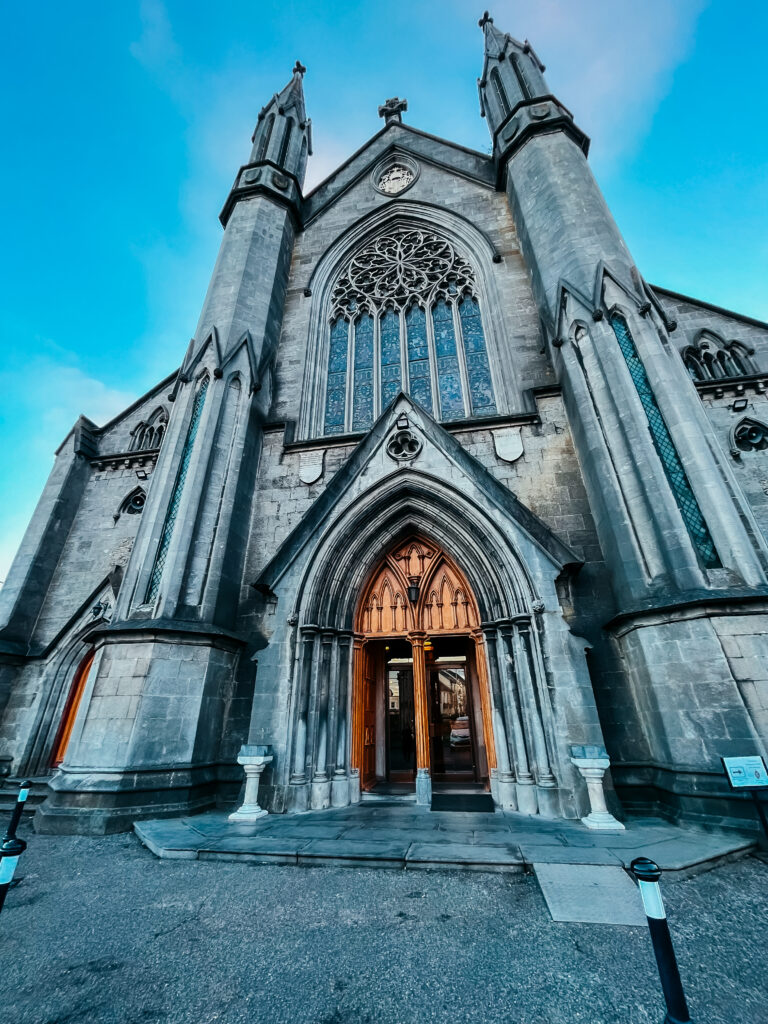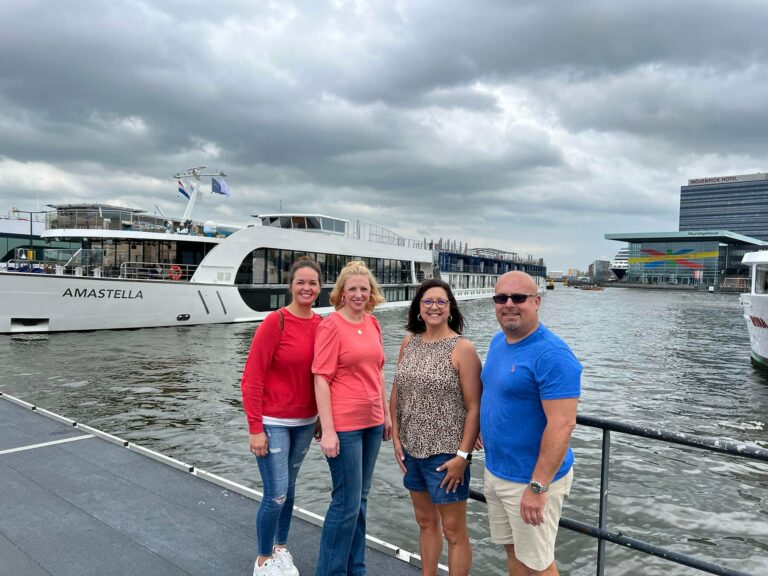Overview
Introduction

Saint John, New Brunswick, also known as "Port City," has some of the highest tides in the world. It's situated where the mouth of the mighty St. John River meets the Bay of Fundy. The funnel-shaped dip in the Atlantic coastline creates tides of up to 55 ft/17 m twice a day. At high tide, the water in the harbor rises an average of 28 ft/9 m and forces the St. John River to flow backward.
But Saint John has much more to offer than a simple maritime vacation. Rich in historic architecture, its Trinity Royal area boasts some of the best-preserved, ornate Victorian-era architecture anywhere. Intricately carved fruits and flowers festoon grand brick buildings, and stone gargoyles stare down from the windows of the historic business district.
The rich tapestry of the past unfolds in Saint John, the oldest incorporated city in Canada. Partridge Island in Saint John Harbour is Canada's Ellis Island, the first quarantine station for immigrants making their way into the country. As many as 2,000 people died there in the latter part of the 19th century. The site, although now closed to visitors, can be seen from shore.
Saint John is also a treasure trove of eco-attractions—from Hopewell Rocks, where you can actually walk on the ocean floor, to parks and beaches inhabited by hundreds of wildlife species. Saint John also boasts the Reversing Falls, a phenomenon created by the awesome force of the changing tide twice a day. Famous for its fog days, or "nature's air-conditioning," it's the perfect place to escape from the heat of summer.
As one of the largest cities in New Brunswick, Saint John is also an international port destination with a bustling marketplace. Boutiques, family-owned businesses and local artisans thrive there. We love the internal pedway system (called the Inside Connection) that connects the waterfront to the entire uptown core.
In recent years, Saint John has experienced an ecological awakening. A clean harbor, newly planted trees and pathways through parks comprise the first phase of a vast waterfront redevelopment that promises to put the Saint John harbor firmly on the cruising map.
Must See or Do
Sights—The Reversing Falls at both high and low tide; the views from the Carleton Martello Tower; people-watching and summer gardens in King's Square; walking up to Fort Howe for a panoramic view of the city; the beautiful sandy shore of Mispec Park just 20 minutes from downtown.
Museums—The New Brunswick Museum to see both a mastodon and a rare Atlantic right whale; the vintage atmosphere at Barbour's General Store; Loyalist House, the oldest house in Saint John; the spiral staircase in the Old County Courthouse.
Memorable Meals—The Old City Market for its variety of lunch choices; breakfast at the Magnolia Cafe; a sunset dinner at the Reversing Falls Restaurant; chowder and scones at The Infusion Tea Room.
Late Night—Cold, locally brewed Moosehead beer; Saint John Ale House in Market Square for a craft beer; a glass of wine at the petite basement-level Happinez Wine Bar.
Walks—Irving Nature Park for bird-watching and hiking one of the eight trails; walking the trails of the Harbour Passage; strolling the downtown waterfront; a walk around the beautiful squares, especially King's Square.
Especially for Kids—The Canada Games Aquatic Centre for its pools and waterslides; the endangered-animal zoo at Rockwood Park; Lily Lake Pavilion at Rockwood Park for a day of outdoor fun.
Geography
Saint John is located on the shore of the Bay of Fundy and at the mouth of the St. John River, which extends northward toward Quebec. The river meets the Bay of Fundy at the Reversing Falls, a phenomenon that forces the river to run backward twice a day.
Downtown Saint John can feel like a maze, with one-way, narrow streets that were laid out in the 1780s, but the indoor pedway system that allows you to walk from the waterfront to the entire uptown district is perfect for foul-weather days. The houses clinging to the hills often remind visitors of St. John's, Newfoundland.
The city is divided by a modern four-lane highway (Route 1) that connects the city to St. Stephen in the west and Moncton in the northeast. Another artery (Route 7) connects Saint John with Fredericton. The St. John River is passable at two points: one at the Reversing Falls for rail and vehicular traffic, and the other at the Harbour Bridge. To get a good view, take the Harbour Bridge, then drive up to the Carleton Martello Tower and return downtown across the bridge that crosses over the Reversing Falls and head along Douglas Avenue to Main Street.
The other major artery is Rothesay Avenue, which will take you out past the suburbs and to the airport.
History
The shores of the Bay of Fundy were home to Micmac (Mi'kmaq) and Maliseet (Wolastoqiyik) natives when French explorer Samuel de Champlain arrived on the nearby island of Saint Croix in 1604. It became a busy Indian trading post that French and English settlers battled over for years until the English finally prevailed by means of the Treaty of Paris in 1763.
During the American Revolution, Saint John served as sanctuary to American settlers loyal to the British crown. After the war, Loyalists fleeing the newly independent U.S. arrived in 1783 to claim grants of land—rewards for their allegiance—from the British monarch. They were a mixed lot—farmers, doctors, clergymen, carpenters—some illiterate, some Harvard-educated.
Among them was Benedict Arnold, denounced as a traitor during the American Revolution, whose questionable business practices made him just as unpopular in Saint John as he had been in the U.S. (His effigy was burned on King Street, and he eventually fled to England.)
Saint John was created as a city by Royal Charter in 1785, making it Canada's oldest incorporated city, and it still proudly displays a crown on its official crest.
New Brunswick's supply of timber ensured Saint John's success as a shipbuilding center, helping the town to grow rapidly. The first chartered bank in Canada opened there, and the population swelled even more when hundreds of thousands of Irish immigrants arrived in the 1840s.
In 1877, fire swept through the heart of the city, destroying 1,600 homes and businesses. Undaunted, the people of Saint John completely rebuilt their city within four years, competing with one another to construct the most ornate factories, churches and office buildings. Today, this city has the largest group of intact Victorian structures in Canada.
Although Saint John no longer builds ships, the port is still one of Canada's busiest—the harbor stays open year-round, even when other northeastern ports are covered with ice. Saint John is also home to Canada's largest oil refinery.
Potpourri
The St. John River was discovered on the feast day of St. John the Baptist in 1604 and was named accordingly. The river later lent its name to the city. In 1925, the city began an effort to be called Saint John—spelled out—to distinguish itself from St. John's, Newfoundland.
The foghorn and the tea bag both were invented in Saint John, with necessity fueling local invention.
Robert Foulis's foghorn was first used on Partridge Island in 1859. The origin of the tea bag is a little trickier—it's a local claim to fame through Red Rose Tea, but not easily provable.
You'll see and hear the Irving name a lot: The Irvings are the industrial and financial first family of Saint John. In addition to a gas station on nearly every corner, two immaculate gifts came from the Irving family: the Irving Nature Park, on the west side of the city, and a complete restoration of the Loyalist Burial Ground in the heart of the city.
What's with all of the brick? Following the Great Fire of 1877, three building bylaws were put in place for 10 years to help prevent another fire. One of these stated that new buildings be constructed out of brick and stone.
The Marco Polo, a three-masted clipper ship built at Saint John in 1851 and called the fastest ship in the world, set records for sailing between London and Australia (76 days one way, 171 days return). It foundered off the coast of Cavendish, Prince Edward Island, in 1883 and is now a protected National Historic site.
The chocolate-bar wrapper was invented not too far from Saint John in St. Stephen. Arthur Ganong liked to take chocolate with him on fishing trips but didn't like the mess it made in his pockets, so he started wrapping it in foil. The innovation became popular, and he started selling it packaged that way.
Saint John has the steepest main street in Canada. King Street has an 8% grade, meaning that in the distance of two blocks, the street rises 80 ft/25 m.
Benedict Arnold, called "the greatest rascal that ever was," made his home in Saint John in 1785-91 after he fled the fledgling U.S. as a traitor during the American Revolution.
In 1932, Amelia Earhart became the first woman to cross the Atlantic flying solo. She left from Saint John and flew to Harbour Grace, Newfoundland, where she then departed for Ireland. She carried a copy of the Telegraph Journal, the Saint John local newspaper, with her.
Location
Ships enter the Bay of Fundy, which separates Nova Scotia from New Brunswick and is home to the tall tides of Fundy. Now considered the gateway to New Brunswick—and the second-largest port in Atlantic Canada—Saint John welcomes about 70 cruise ships annually and more than 185,000 cruising tourists.
The majority of cruise ships dock in the heart of Saint John at the Marco Polo Cruise Terminal (formerly Pugsley A/B), while others may dock at Long Wharf. A vendors market operates outside during cruise season, and the terminals have Wi-Fi and phones available. The port also rents its facilities for special events. Phone 506-636-4869. http://www.sjport.com.
The cruise lines offer dozens of shore excursions in Saint John (and many exclusive to the lines). For those who choose to explore on their own, choices are close by and easy to reach—much of Saint John's appeal is its easy access from waterfront to city.
Harbour Passage (a series of walking paths) connects the waterfront to heritage sites and downtown shops. The passage extends from the Boardwalk at Market Square "uptown" (as downtown is called in Saint John) to the food pavilions on Bentley Street and Chesley Drive. Another leg of the passage takes you from Fort LaTour through Hilyard Street near Fort Howe, and then out to Fallsview Park, the Reversing Falls and the west side of the city.
When a cruise ship is in port, taxis line the front of the docks, and a temporary greeting station is staffed with local volunteers. Businesses in the city schedule hours around the cruising schedule, especially in the winter months, and on those days you'll find extended hours of business to accommodate shore excursions.
The nearest tourist-information center is at the Shoppes of City Hall in the Inside Connection Pedway Mall level 2. Phone 506-658-2990. Toll-free 866-463-8639. http://www.tourismsaintjohn.com.
For more information, contact Saint John Port Authority, Marco Polo Cruise Terminal, 111 Water St. Phone 506-636-4869. http://www.cruisesaintjohn.com.
Shore Excursions
Typical excursions may involve a tour of Saint John by bus or foot. Museums, quaint boutiques and exciting food choices are easily accessible by foot; Market Square is teeming with authentic Atlantic restaurants, and local artisans hawk their wares. If you're traveling during the summer months, you will likely land during one of the many summer festivals that celebrate the music, lifestyle and hospitality of the Maritimes.
Consider taking one of the historic walking tours (most are about 90 minutes in length) to sample the 400 years of rich Loyalist history. Prince William's Walk begins at Market Square, passes The Three Sisters Lamp and a number of historic buildings, and concludes at Saint John's first frame building. The Loyalist Trail traces the footsteps of settlers who fled there during the American Revolution, and the Victorian Stroll guides you past some of the grandest homes built after the great fire of 1877.
You'll need a car if you want to see the Reversing Falls, which we highly recommend. Alternatively, a jet boat tour will let you actually feel the calm waters suddenly lurch and churn as the mighty St. John River rises with the tide. It's safe for family members of most ages, but children younger than age 6, pregnant women and the elderly may want to exercise caution and watch from the shore, or take the milder sightseeing tour instead.
If you have more time, consider a trip to a fishing village, such as Grand Bay-Westfield, Rothesay, Quispamsis or St. Martins. If you travel east, St. Martins will provide plenty of photo-ops of lighthouses, covered bridges, fishing boats and sea caves. Consider parking your car and hiking the Fundy Trail for breathtaking views you won't find anywhere else in the world.
To the west you'll find the resort town of St. Andrews by-the-Sea, where you can explore the stately Algonquin Hotel. Beautiful sandy beaches, riverside campgrounds and peaceful drives along the coast await you there. Free cable-ferries criss-cross the river all along these routes, so take time to explore.












































